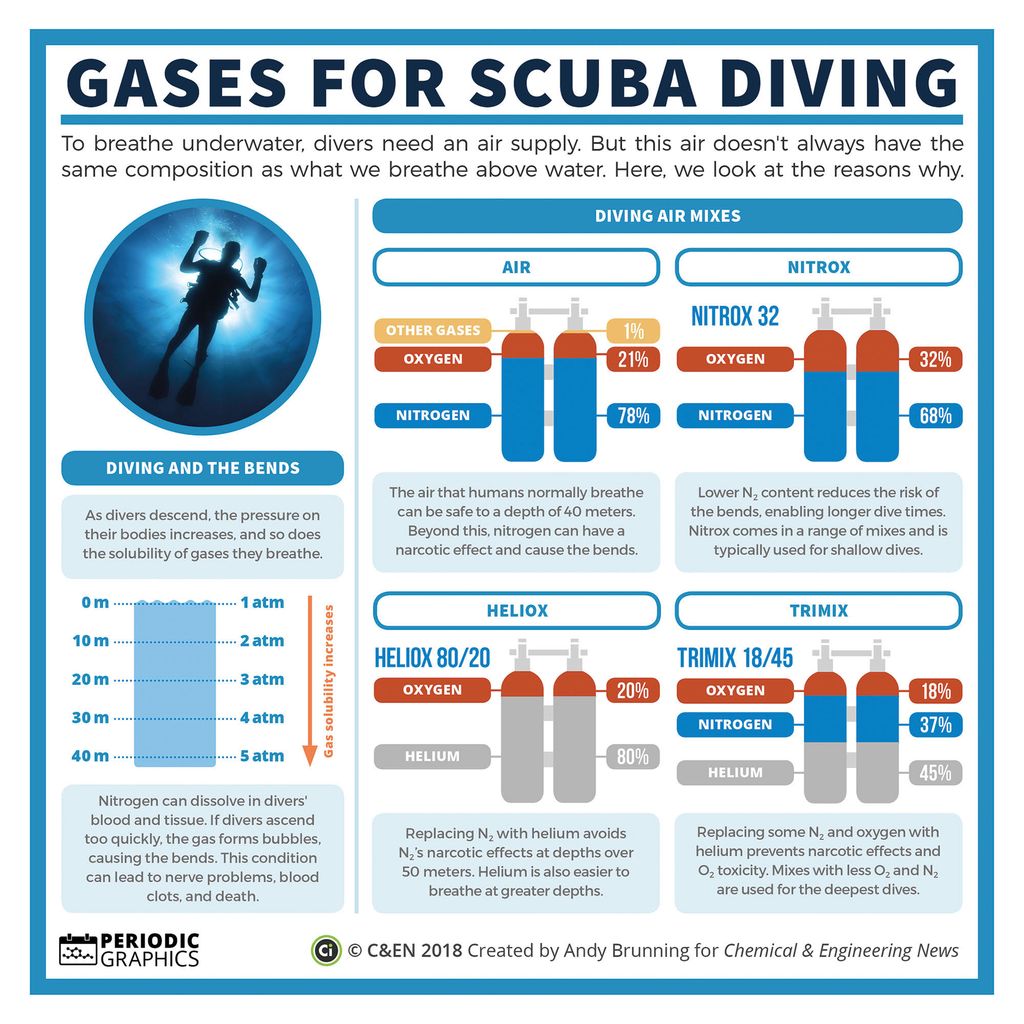Deep Dive Mixtures
Jun 07, 2019 • 132 views
As discussed earlier, breathing underwater is not as easy as it seems. The mixture of the air is very crucial and using the wrong one can lead to severe injuries and in extreme cases even death. In my previous blog we discussed about the composition of regular air, why it doesn’t work so well underwater, the effect of pO2 and what mixtures(nitrox) work well for various kinds of dives. If you haven’t read that yet, I highly recommend you to check that out before reading this one as it is more of a continuation.
Nitrox could be used to dive to relatively shallow depths for a longer period of time. However, nitrox isn’t used very commonly for recreational dives. Why? The normal air cylinder is filled with compressed air which contains 21%oxygen as that is the composition in the atmosphere. Whereas, in the case of nitrox the composition has to be altered and there maybe slight variations in the composition in each cylinder which may lead to serious injuries or dive problems. Secondly, nitrox shouldn’t be used by non-trained divers as most of them aren’t aware of risks such as oxygen toxicity which poses a greater threat while using nitrox. And one should be aware of the importance of measuring the gas composition before diving.
In general, Nitrox and compressed air work well for a trained diver at shallow depths.


And these two are most commonly used by recreational trained divers.
So now the pressing question arises: What do we use for deep dives?
Trimix, Heliox, Hydreliox and Hydrox are the terms you will hear as the professional diving solutions. Let us try to understand little in details about them.
Since, Oxygen and Nitrogen both cause threat in different situation, one possible solution for this problem would be to replace a huge chunk of the mixture of Oxygen and Nitrogen with other gases.
Heliox

Nitrogen content in regular air can completely be replaced by the helium which gives rise to a mixture called ‘heliox’. Some Heliox, may have the same amount of oxygen as regular air.
-So, no Nitrogen – no nitrogen narcosis, hence increased dive time.
-Same oxygen of normal air, so no oxygen toxicity in normal depth. So this gives good dive time up to a depth of 200ft.
*Heliox, however, does require a secondary tank of air or nitrox to be used.
*After around 300ft divers face something called “High Pressure Neurological Syndrome” or simply HPNS.
How Do Divers Handle HPNS?
Trimix

Trimix contains, oxygen, helium and nitrogen. Nitrogen in Trimix compared to Heliox reduces the risk of the high pressure nervous syndrome.
This works fairly well for deep dives, the trimix can be altered by further reducing the nitrogen content.
Trimix can be used for dives at a depth greater than 400ft and is not allowed for recreational divers but used for military, scientific and commercial explorations.
The main problem with trimix is that, due to the high molecular weight of Nitrogen and oxygen it becomes difficult to breathe under high pressure.
Handling the large molecular weight of N2
Hydreliox and Hydrox

Another mixture of gases comprising Oxygen, Helium and Hydrogen called ‘hydreliox’ can be used. Hydrogen being the lightest element, makes it relatively easier to breathe the mixture in comparison to trimix. Hydrogen plays a key role in forming underwater breathing mixtures. Another mixture which can be formed with hydrogen is called ‘hydrox’ which comprises of hydrogen and oxygen only. Both these mixtures (hydrox and hydreliox) are highly suitable for deep diving and can be used for dives up to a depth of 700ft.
These are relatively new and used only in technical and experimental diving. Other mixtures like Argon-Oxygon, neon-Oxygen etc are also used in technical diving.
SUMMARY


Picture taken from: http://cenm.ag/scubadiving
I hope you enjoyed this article and was informational.
Kindly do view my other articles : https://wrytin.com/aditya4
